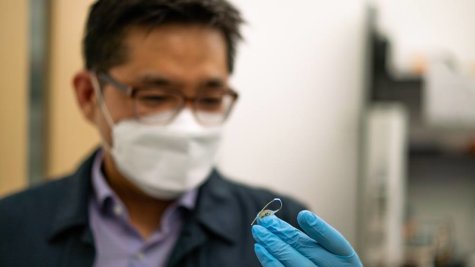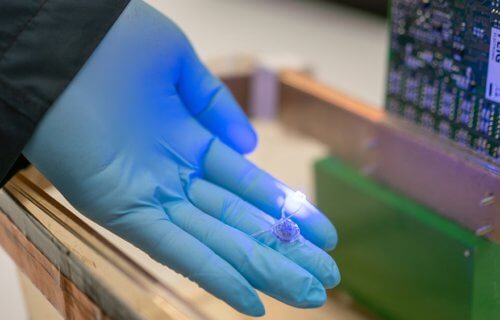COLLEGE STATION, Texas — For individuals struggling with obesity, surgery is sometimes the only answer to avoid serious health problems. Gastric bypass surgery however, is a serious procedure which reroutes the digestive tract and has a lengthy recovery time. A new study finds there may be a better way to help people achieve weight loss — just by using light. Researchers at Texas A&M University say they have created a wireless device which stimulates the nerves to make a patient feel full.
The team says the tiny implant uses light to trigger the endings of the vagus nerve in the stomach. This causes the nerve to send out the signal of fullness so the patient won’t have the urge to overeat. Similar devices act like a pacemaker and need a power cord to operate. Study authors say their invention can survive the acids of the digestive system and responds to a remote radio frequency signal.
“We wanted to create a device that not only requires minimal surgery for implantation but also allows us to stimulate specific nerve endings in the stomach,” says Sung Il Park, assistant professor in the Department of Electrical and Computer Engineering, in a university release. “Our device has the potential to do both of these things in the harsh gastric conditions, which, in the future, can be hugely beneficial to people needing dramatic weight-loss surgeries.”
Why opt for weight loss surgery?
Researchers say overweight individuals with a body mass index over 35, which classifies as obese regardless of height, or people dealing with at least two obesity-related conditions should consider surgery. They add weight loss procedures offer the patient immediate relief and also help with long-term weight control.
Recently, scientists have targeted the vagus nerve more frequently when it comes to weight loss. This is because the nerve is responsible for telling the brain when the lining of the stomach is filling up. Current devices targeting the vagus nerve use electrical jolts to activate the feeling of fullness and curb hunger.
Park says the new device can make this process much more comfortable for the patient by removing wires and utilizing the latest in genetic and optical equipment.
“Despite the clinical benefit of having a wireless system, no device, as of yet, has the capability to do chronic and durable cell-type specific manipulation of neuron activity inside of any other organ other than the brain,” Park explains.
Using light to stop hunger

Matthew Linguist, Texas A&M Engineering)
In a lab experiment, Park’s team first expressed genes which respond to light treatment into the specific vagus nerve endings for weight control. They then fastened their small, paddle-shaped device to the stomach. The wireless gadget has micro LED lights in its flexible tail which trigger the nerves. The head of the device (or harvester) contains microchips which pick up the wireless signal and also powers the LEDs.
To the research team’s surprise, they discovered that the common belief of how hunger suppression works isn’t entirely accurate. The common thought is that when the stomach is full, it expands and this information about the stomach stretching travels to the brain through the vagus nerve.
“Our findings suggest that stimulating the non-stretch receptors, the ones that respond to chemicals in the food, could also give the feeling of satiety even when the stomach was not distended,” Park reports.
In addition to helping the stomach, the Texas team adds their device could also manipulate nerves in other organs in the gastrointestinal tract with few adjustments.
“Wireless optogenetics and identifying peripheral neural pathways that control appetite and other behaviors are all of great interest to researchers in both the applied and basic fields of study in electronics, material science and neuroscience,” Park concludes. “Our novel tool now enables interrogation of neuronal function in the peripheral nervous systems in a way that was impossible with existing approaches.”
The study appears in the journal Nature Communications.
